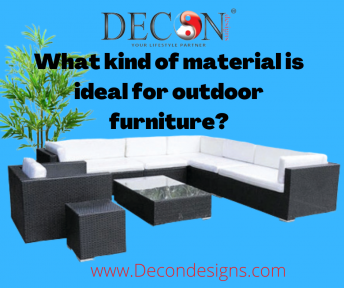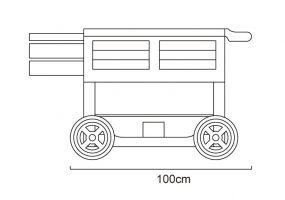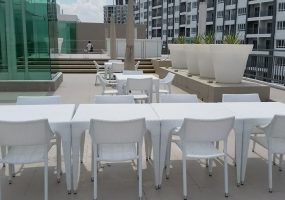
What kind of material is ideal for outdoor furniture?
You’ll likely look for many of the same qualities in outdoor furniture as inside tables, chairs, and sofas, such as toughness, comfort, style, and price. The main distinction is that patio furniture must withstand exposure to the elements outside. While there isn’t much patio furniture that is completely weatherproof, there are significant variations depending on the materials employed.
It’s crucial to comprehend the advantages and disadvantages of various material choices before making a choice. Assess how well each fits with your preferences and priorities, as well as the needs of your residential or professional environment. Since every circumstance is different, selecting the best material for outdoor patio furniture depends on how well your individual needs and each material’s intrinsic characteristics line up.
Considerations for Outdoor Materials
The frames, tabletops, and upholstery of outdoor furniture must maintain their structural integrity and aesthetic appeal over several seasons and under various weather conditions. In addition, it’s crucial to look at how much time and effort it takes to maintain materials year-round as well as their costs and environmental friendliness.
Sunlight and temperature
It’s important to seek outdoor materials that can endure damage from strong UV rays and changes from high heat to cold if you reside in a sunny area or one with significant seasonal climatic shifts.
Heat Conservation
Other logistical issues may arise as a result of the heat. Patio furniture exposed to the sun can warm up and become uncomfortable (or dangerous) to touch. Nobody wants to sit on or move around in a lounge chair by the pool and burn their skin.
Fading
Many materials can fade and lose their luster over time when they are exposed to the sun regularly. The aesthetic change may be pleasing (such as patina) or may just be a loss of color intensity or uneven spots.
Cracking
When heated or chilled, some materials visibly expand or contract. When subjected to extremely high or low temperatures, they may split, crack, distort, or become brittle. Furniture might flex and crack due to dry air as well.
Durability
Under ideal circumstances, some outdoor materials might survive for years, but when exposed to bad weather, they might need to be changed every few seasons. Others can endure a lifetime of various elements and yet seem brand new. Usage is another factor that affects durability. The sun loungers and daybeds that line the poolside of well-known upmarket resorts and hotels will show less wear and tear if you just use your patio dining table a few times over the summer. The materials should be more durable the more frequently they will be used.
Cost
Most people consider the financial costs of selecting one type of furniture material over another in the end. While it’s crucial to stick to your spending plan, it’s also critical to recognize how expensive materials are over time and the value of their cost against benefits. Will it require replacement regularly? Is the upkeep excessively time- and effort-consuming? These are important financial factors that you might not consider while weighing your options.




